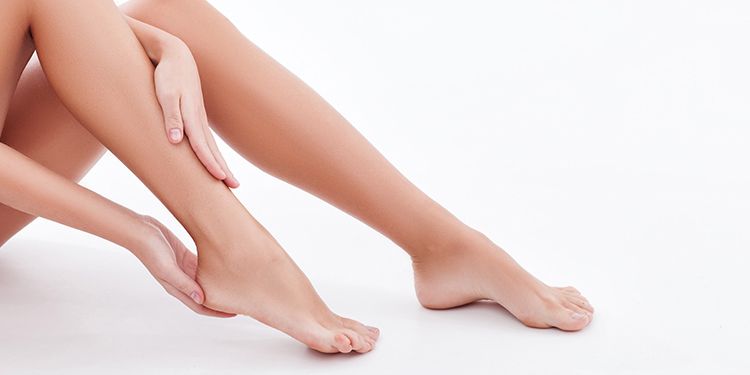Recognizing Excessive Sweating: Dermatology Insights on How to Stop Sweaty Hands
Recognizing Excessive Sweating: Dermatology Insights on How to Stop Sweaty Hands
Blog Article
Unveiling the Intricacies of Excessive Sweating: A Comprehensive Guide to Diagnosis and Administration
Extreme sweating, medically called hyperhidrosis, is a problem that influences a considerable number of people and can have a profound influence on their high quality of life. While sweating is a natural bodily feature, its overactivity in hyperhidrosis presents a distinct set of difficulties that commonly go beyond mere discomfort. Comprehending the underlying causes, identifying the signs and symptoms, and navigating the analysis process for hyperhidrosis can be elaborate jobs. In this comprehensive guide, we will discover the complexities of hyperhidrosis, from its diagnosis to the range of treatment alternatives available, clarifying reliable monitoring methods for those facing this problem.

Understanding Hyperhidrosis Causes
Hyperhidrosis triggers can be connected to numerous factors such as genetics, hormonal discrepancies, and particular medical problems. Genetics play a substantial role in key focal hyperhidrosis, where individuals acquire the condition from their household participants. By determining the particular elements contributing to excessive sweating, healthcare service providers can tailor therapy strategies to address the underlying reason, offering relief and boosting the top quality of life for individuals influenced by hyperhidrosis.
Recognizing Hyperhidrosis Effects

Additionally, hyperhidrosis signs may manifest in emotional and social distress, as people might really feel humiliated or distressed regarding their sweating, resulting in evasion of social scenarios (How to stop sweaty hands). In addition, repeated episodes of extreme sweating can lead to skin maceration, fungal infections, and an overall decline in self-worth
Diagnostic Refine for Hyperhidrosis
Starting the analysis procedure for extreme sweating includes detailed examination of the person's case history and physical exam. Making inquiries concerning the onset, period, and activates of sweating episodes is vital to set apart between key focal hyperhidrosis and additional generalized hyperhidrosis. Medical history ought to also include concerns concerning medications, clinical conditions, and family members history of hyperhidrosis.
During the physical exam, specific interest is paid to the areas influenced by sweating. The doctor may evaluate the extent of sweating, look for signs of underlying conditions, and evaluate the influence of sweating on the person's top quality of life. page Furthermore, particular tests like the gravimetric test, starch-iodine examination, or skin conductance dimensions might be performed to evaluate the quantity of sweat produced.
Furthermore, in cases where second hyperhidrosis is believed, added examinations such as blood tests, urine examinations, and imaging researches might be suggested to determine the underlying source of too much sweating. The diagnostic procedure aims to precisely establish the kind and reason for hyperhidrosis to lead appropriate management approaches.
Treatment Choices for Hyperhidrosis
When addressing excessive sweating, various treatment alternatives are readily available to relieve symptoms and enhance the person's lifestyle. The therapy approach for hyperhidrosis depends upon the extent of signs and the patient's response to preliminary treatments.
Topical treatments, such as aluminum-based antiperspirants, are typically advised as the very first line of defense for handling mild instances of hyperhidrosis. These items work by connecting the sweat air ducts, hence reducing the quantity of sweat that gets to the skin's surface area. For individuals with much more extreme signs, dental drugs like anticholinergics might be recommended to help lower sweating. These drugs moved here can have side impacts and are not ideal for everyone.

Effective Administration Techniques
To successfully handle hyperhidrosis, a thorough and customized treatment plan tailored to the individual's particular requirements and reaction to previous treatments is essential. This plan might integrate a combination of therapeutic approaches, consisting of lifestyle alterations, topical treatments, dental medicines, botulinum contaminant injections, iontophoresis, and in severe instances, medical treatments like gland elimination or sympathectomy. Way of life adjustments such as using moisture-wicking garments, using antiperspirants, and exercising stress-reducing strategies can complement clinical treatments. Topical antiperspirants including light weight aluminum chloride are frequently the first-line treatment, with stronger solutions available for resistant cases. Oral drugs like anticholinergics may be suggested for generalized hyperhidrosis. Botulinum contaminant injections work for focal hyperhidrosis, giving short-term alleviation by obstructing the launch of acetylcholine. Iontophoresis, involving the see this page usage of a reduced electric current to reduce sweat gland task, can be helpful for both palmoplantar and axillary hyperhidrosis. Surgical alternatives are normally booked for severe, refractory situations and call for cautious consideration of benefits and risks. A multidisciplinary method including skin specialists, medical care physicians, and, if required, doctors, can enhance the monitoring of hyperhidrosis.
Conclusion
In verdict, hyperhidrosis is a condition identified by extreme sweating, which can considerably affect an individual's quality of life. With appropriate medical diagnosis and monitoring strategies, individuals experiencing from hyperhidrosis can locate relief and boost their overall well-being.
Extreme sweating, clinically understood as hyperhidrosis, is a condition that affects a significant number of individuals and can have a profound influence on their high quality of life. By determining the particular aspects contributing to extreme sweating, health care carriers can customize therapy strategies to deal with the underlying cause, using relief and improving the quality of life for individuals affected by hyperhidrosis.
Hyperhidrosis, identified by excessive sweating beyond what is needed for regulating body temperature level, can dramatically impact an individual's high quality of life. Asking concerning the beginning, duration, and activates of sweating episodes is crucial to distinguish between primary focal hyperhidrosis and secondary generalised hyperhidrosis. Treatment for hyperhydrosis of hands and feet.In conclusion, hyperhidrosis is a condition identified by too much sweating, which can considerably affect a person's high quality of life
Report this page